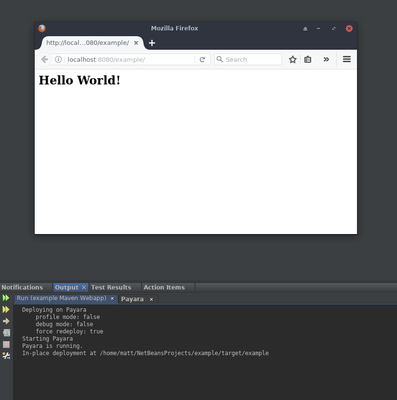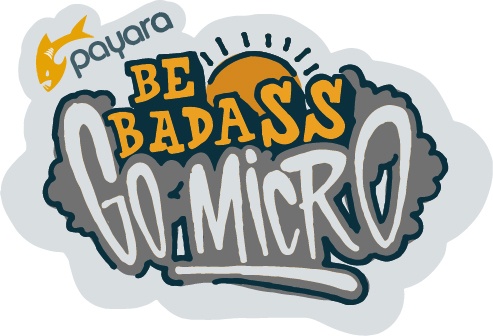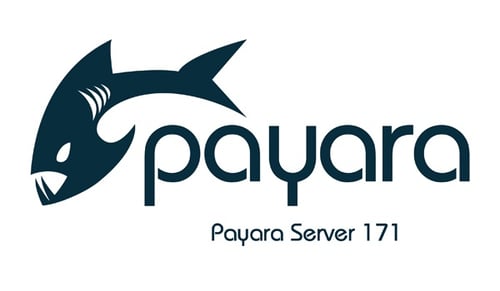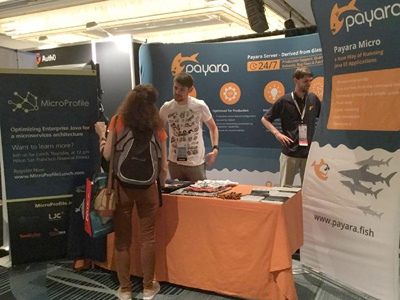Archive from February 2017
Payara for Beginners - Adding Payara Server to NetBeans
Published on 28 Feb 2017
by Matthew Gill
Topics:
Maven,
Payara Server Basics,
How-to,
NetBeans
|
32 Comments
This blog uses NetBeans 11.1. If you're using an older version, you may need to perform slightly different steps to get the same result.
When testing an app to be run on Payara Server, it can be extremely useful to be able to test your app continuously from your IDE. If you're using NetBeans this is made very easy. Follow the steps in this blog to setup NetBeans to use Payara Server for running your web apps.
What's new in Payara Micro 171?
Published on 23 Feb 2017
by Fabio Turizo
Topics:
What's New,
Payara Micro,
Microservices,
Hazelcast,
Caching,
Admin,
Cloud,
MicroProfile
|
2 Comments
In case you missed the news earlier this week - we are pleased to announce a new release of Payara Micro and Payara MicroProfile 171 to start the new year with a bang! With this new release, we have implemented substantial changes that are meant to improve the stability and usability of both 'regular' and MicroProfile version of Payara Micro. As is usual with our releases, keep special attention to our blog in the following weeks to read detailed articles on these changes and features to take full advantage of them!
For Payara support customers, LTS - Long Term Support - has been introduced for both Payara Micro and Payara MicroProfile so you can expect a full year of patch releases which only include fixes - great news for users who value stability over new features (find out more about the support services here)!
All new changes and features introduced in this release are also included in Payara MicroProfile unless explicitly stated.
What's new in Payara Server 171?
Published on 21 Feb 2017
by Michael Ranaldo
Topics:
What's New,
Production Features,
Hazelcast,
Clustering,
Scalability,
Admin
|
3 Comments
Kick-starting yet another year, we are pleased to announce our largest release yet - Payara Server 4.1.1.171. Building on a year's worth of updates and improvements, in this release, you can find 18 brand new features and over 60 new fixes and enhancements for Payara Server & Payara Micro! Given the size of the additions, look out for detailed blogs in the near future. For now, check out below for a summary of the changes in 171 release, and have a look at the full release notes.
2016 Tech Conferences - Java EE & Microservices
Published on 17 Feb 2017
by Ondro Mihályi
Topics:
Java EE,
Payara Micro,
Microservices,
JVM,
MicroProfile
|
0 Comments
Throughout the last year, the Payara team were tracking all the important activities related to Java and Java EE. We attended many conferences, actively participated in lots of community activities, and we helped to found a completely new MicroProfile initiative, with the aim to facilitate innovation in the enterprise Java space.
With this article I'd like to look back at 2016 to share my impressions from the past year with you and outline what we at Payara expect to happen in the Java world in 2017.
Fundamentos de Payara Server Parte 2 - Reenviando peticiones desde Apache a Payara Server en Ubuntu
Published on 15 Feb 2017
by Michael Ranaldo
Topics:
Payara Server Basics,
How-to,
Apache,
Ubuntu,
Payara Server Basics - Series,
Spanish language
|
0 Comments
Payara Server Basics Part 2 - Forwarding Requests from Apache to Payara Server on Ubuntu
Published on 15 Feb 2017
by Michael Ranaldo
Topics:
Payara Server Basics,
How-to,
Apache,
Ubuntu,
Payara Server Basics - Series
|
4 Comments
In the first blog of this series, we configured our Apache Web Server. Our next step will be to set up request forwarding to send traffic to Payara Server. If you need guidance on installing Payara Server on Ubuntu, we already have a blog post covering the installation of a JDK and Payara Server which we would recommend you read before continuing with this blog.
GlassFish to Payara Server Migration - migrating away from the Oracle Access Manager integration
Published on 09 Feb 2017
by Fabio Turizo
Topics:
How-to,
Security,
JASPIC,
GlassFish Migration
|
0 Comments
In the fifth part of our continuing series on alternatives for commercial Oracle GlassFish features, we are looking at a replacement for the Oracle's Access Manager integration feature.
A Curious Case of Java EE – 2016 Recap
Published on 03 Feb 2017
by Dominika Tasarz
Topics:
Java EE,
MicroProfile
|
1 Comment
Let’s rewind to the first half of the year
2016 - what a year it was for Java EE! As most of you probably remember, around spring time, some worrying rumours started spreading in the Java community about Oracle abandoning Java EE. To make things worse, crucial members of the Oracle Java EE team were leaving, including Cameron Purdy, Reza Rahman, Mark Heckler and John Clingan.
Payara Server Basics Part 1 - Installing Apache on Ubuntu
Published on 02 Feb 2017
by Michael Ranaldo
Topics:
Payara Server Basics,
Apache,
Ubuntu,
Payara Server Basics - Series
|
2 Comments
In this blog series, we will aim to give an overview of the basics of using Payara Server in a production scenario using Apache Web Server (sometimes called httpd) and Ubuntu 16.04. Many of the concepts described in these blogs do not rely on the tools we are using here and can be applied to other scenarios.
Fundamentos de Payara Server Parte 1 - Instalando Apache en Ubuntu
Published on 02 Feb 2017
by Michael Ranaldo
Topics:
Payara Server Basics,
Apache,
Ubuntu,
Payara Server Basics - Series
|
0 Comments









